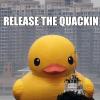Hello All,
I have been tasked with creating a "sanitation audit" for our quality department to perform during a sanitation cleaning. we are in high acid canning and we are level 3 SQF. we already have many procedures in place however my manager has requested that I perform one during our busy season. I already have a few things in mind to put on my audit. However I would like some more input from the community. Below is some of the things I will be looking for or have already thought of. please add to this list.
Temperature of water - Low pressure and high pressure ( any input of the correct water temp would be appreciated)
standing on equipment to clean -
using correct color of brushes to clean
correct color of cleaning pads to use
proper hand washing
proper gloves
spraying down not up
Please help me add to this list.
Thank you all.















